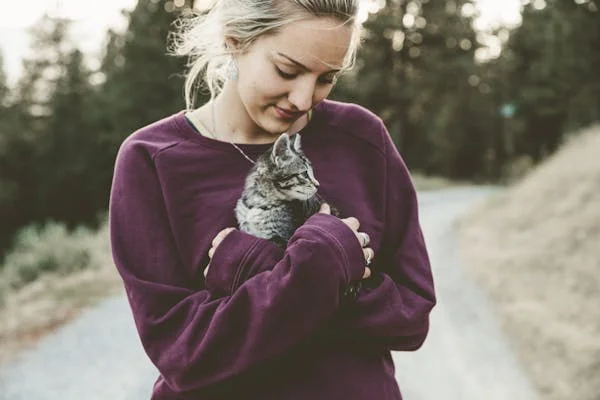Essential oils have gained popularity for their therapeutic properties, but their use around cats can be a complex issue. Unlike humans and dogs, cats are uniquely sensitive to many substances due to their distinct physiology. Understanding which essential oils are safe and how to use them responsibly can ensure your feline’s health and well-being.
Why Cats Are Sensitive to Essential Oils
Cats process substances differently because their livers lack certain enzymes, making them especially sensitive to essential oils. This deficiency makes them more vulnerable to toxins, but cat safe essential oils are an exception. However, a small exposure to harmful oils can lead to serious health issues like respiratory distress, liver damage, or even seizures. When choosing essential oils for a home with felines, it’s essential to understand their unique needs and limitations.
Essential Oils and Cats
Certain essential oils are considered safe when used properly around felines. These include:
- Frankincense: Known for its calming effects, frankincense is often used to reduce stress in cats.
- Helichrysum: This oil has mild properties that may support skin health when diffused.
- Cedarwood (Atlas): When diluted appropriately, cedarwood oil can repel insects and provide a pleasant, non-toxic scent.
- Chamomile: Both Roman and German chamomile are gentle enough to use around cats for relaxation.
It’s critical to ensure these oils are 100% pure, organic, and properly diluted before use. Even essential oils for felines should be introduced gradually and monitored closely for any signs of discomfort.
Safe Usage Practices for Essential Oils around Cats
Using essential oils safely around cats requires care and consideration. Here are some best practices:
- Dilution Is Important
Always dilute essential oils heavily before application. Even safe oils can become harmful when used in their pure form. A ratio of one drop of essential oil to 50 drops of a carrier oil is recommended. - Diffuse in Well-Ventilated Areas
Diffusing oils is often the safest method, as long as the space is well-ventilated. Keep the diffuser in a location your cat can leave if they feel uncomfortable. - Avoid Direct Application
Applying oils directly on a cat’s fur or skin should be avoided unless recommended by a veterinarian. Felines groom themselves frequently, and ingesting even diluted oils can be harmful. - Store Oils Securely
Keep essential oils out of reach of pets. Accidental ingestion or contact with concentrated oils can be dangerous.
Signs of Essential Oil Toxicity in Cats
Even with the best precautions, accidents can happen. Recognizing early signs of toxicity is crucial for quick intervention. Symptoms include:
- Drooling
- Lethargy
- Vomiting
- Difficulty breathing
- Uncoordinated movements
If any of these signs are noticed, seek immediate veterinary care. Time is of the essence when dealing with potential toxicity.
Incorporating Natural Care Safely
Natural care for pets, including the use of essential oils, can provide valuable benefits when done correctly. From promoting relaxation to supporting a pest-free environment, essential oils can enhance your cat’s quality of life. However, it’s vital to focus on safe, responsible use to avoid unnecessary risks. When exploring such options, always consult with professionals familiar with feline health. They can provide guidance on integrating natural remedies into your cat’s routine safely.
Cat safe essential oils can be a wonderful addition to a pet-friendly home when used thoughtfully. Choosing the right oils, practicing proper dilution, and maintaining vigilance about your cat’s reactions can help ensure their safety. With a careful approach, you can create a soothing environment for both you and your feline companion. Remember, your cat’s health should always come first. When in doubt, consult a veterinarian or a pet care specialist before introducing any new substances into your home. Through informed and mindful use, essential oils can coexist harmoniously with your beloved pet.





